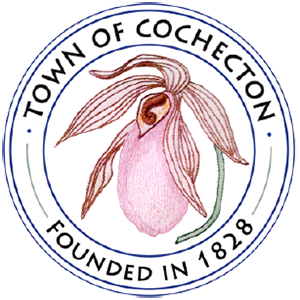Station Rock
The early pioneers of Cushetunk were not the first white men to set foot in this area. Surveyors had been through marking out the trackless forests, to lay out the line for the various grants given by the English Kings to the Penns, the Connecticut Colonists and New Jersey.
Some of these grants overlapped causing many disputes. So in 1720 a commission on New York and New Jersey surveyors came up the Delaware to locate the dispute point. New York claimed the line should be on the Delaware mouth of the Neversink near Port Jervis; while New Jersey contended that it was on the river at Cochecton.
The Commission reached the conclusion that the point was at Cochecton, so the large rock called Station Rock on the bank of the New York side was marked. A drill hole was made in the rock and the letters "J L" were cut thereon. The letters "P L" are cut on the facing shore. These letters can still be seen, though waters and ice of the Delaware have flowed over and around the huge boulder for more than 224 years.
The original grant called for a boundary line between the provinces from Station Rock — 41 degrees 41 minutes north latitude in a straight line to a point on the Hudson 41 degrees north.
The line run was called the New Jersey Claim Line and was the cause of many a dispute between the authorities and the people of the states involved.
After years of arguments and dissension, a Commission rendered a decision on October 17, 1769 and the line was finally fixed in Port Jervis where the Delaware and the Neversink meet.
County Historian James W. Burbank has written quite extensively on the Jersey Claim Line, which material has been gathered in a printed pamphlet.

